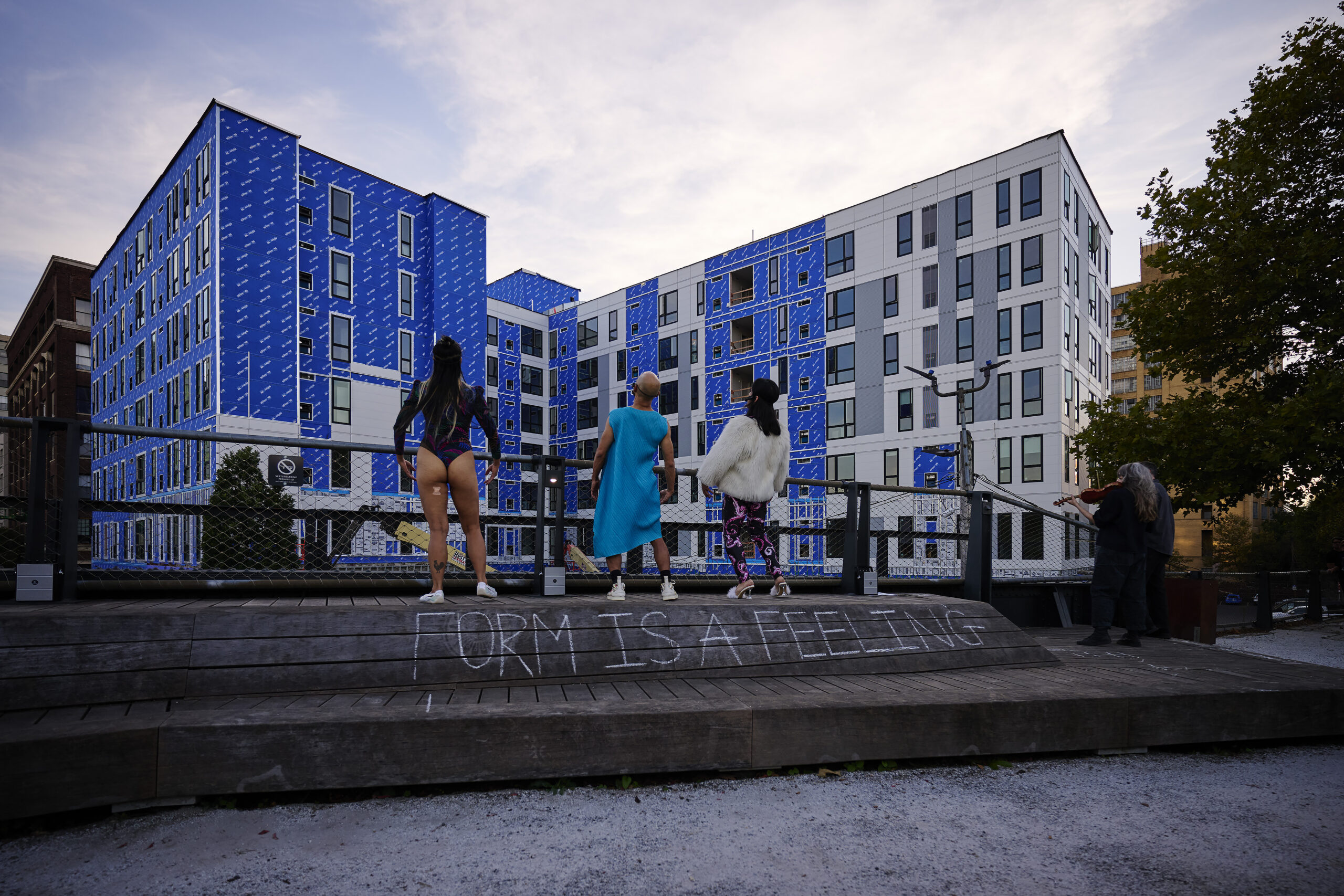The allure of melodic piano music enchants my walk to the garden entrance of The Colored Girls Museum, affirming I’ve reached my destination. Outside the gate sits a table with masks, hand sanitizer, and bug spray. Andrea “Philly” Walls, multidisciplinary artist and founder of the Museum of Black Joy, approaches the entrance and personally greets the group of us lingering there. She offers a QR code that gives access to the virtual reality (VR) garden.
The yard is furnished with an assortment of flowers that the VR application activates with 3D graphic design images created in collaboration with the Mz.Icar Collective. It adds a magical essence to the already serene atmosphere that is the backyard of the Colored Girls Museum. I share an ipad with another guest and we explore the digital world together, uncovering hidden afrofuturist artworks by Walls in this new oasis. Adinkra symbols, hummingbirds, blooming dandelions, watermelons, and regal portraits of black women decorate the scene, vanishing the moment the camera pans to its next point-of-view, and unveiling new hidden pleasures with each perspective shift of the lens.
As I continue down the garden path toward the home, warm biscuits and iced hibiscus tea are served. I grab a jar of tea and take a seat on one of the rocking chairs on the wrap-around porch. Moments later, I’m mid-conversation with an elder – a mother of six daughters – sharing stories of motherhood, receiving advice, sending appreciation. The space allowed this organic exchange by leaving room for us to take our time there, ease in, and stay awhile.
Video projections light up the building with images of people dancing, playing drums, a child laughing, box braids, ragdolls, a J-set performance, dandelion seeds. Walls stands beneath her designs and introduces the intention of the evening, describing The Colored Girls Museum as “a refuge for the ordinary extraordinary colored girls.” She introduces Misty Sol who engages us in the rituals of libations and storytelling.
Sol’s storytelling is an embodied exchange between past and present. Memory seems to live through her movement as she describes an experience familiar to many kinky-headed kids getting their hair styled for picture day. The flat iron or hot comb, and Blue Magic (or your hair grease of choice) was a very specific recipe and ritual of many black households. She describes the smells and sounds, gesturing imagery of having curls pressed out by heat and the gel to hold it. And braids. A style, yes. But what’s more, a codified language; a time commitment; an act of care, or rather tough love for tender heads. Her story reminds us of the function of braids as a mode of communication that once led enslaved peoples back to loved ones and/or freedom.
Variance: Ritual for a Home felt like a housewarming; intentional, familiar, and as promised – a place for refuge. Afterwards, guests were invited to stay and share space, make connections and mingle. The museum was opened for impromptu tours. I recommend taking the time to visit – especially and most definitely for colored girls. The next public offering will be EvictionProof Peep Show Home Returns on Sept. 28 and 29 at 6pm.
Variance: Ritual for a Home, The Museum for Black Joy, The Colored Girls Museum, Philly Fringe Festival, Sept. 14, 2024.
Image description: Two people look at an ipad with virtual reality images. Their backs are facing the camera and the person on the left wears a green hat, long locs, and a red shirt. The person on the right wears a black shirt and glasses.






